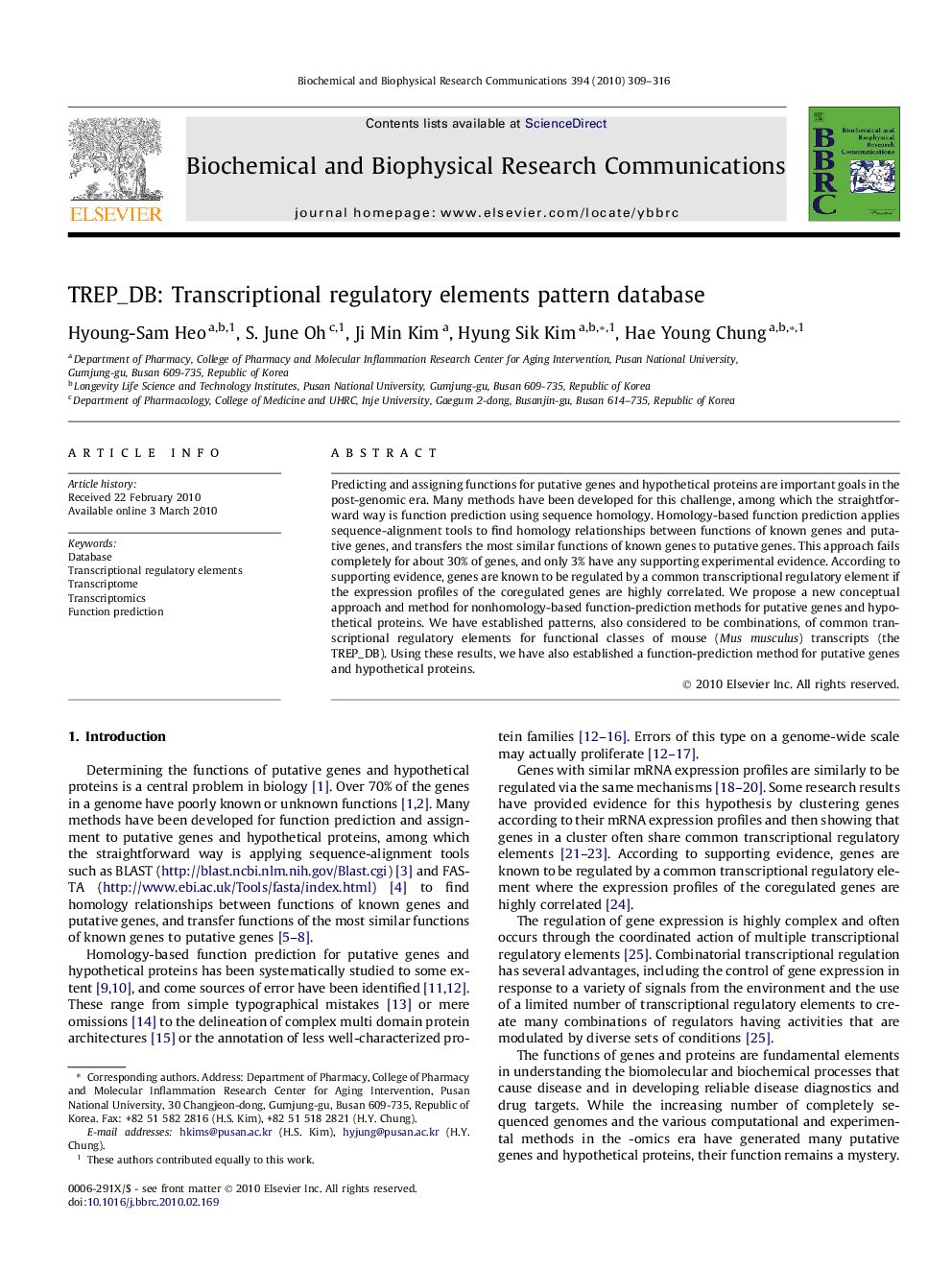| Article ID | Journal | Published Year | Pages | File Type |
|---|---|---|---|---|
| 1932410 | Biochemical and Biophysical Research Communications | 2010 | 8 Pages |
Predicting and assigning functions for putative genes and hypothetical proteins are important goals in the post-genomic era. Many methods have been developed for this challenge, among which the straightforward way is function prediction using sequence homology. Homology-based function prediction applies sequence-alignment tools to find homology relationships between functions of known genes and putative genes, and transfers the most similar functions of known genes to putative genes. This approach fails completely for about 30% of genes, and only 3% have any supporting experimental evidence. According to supporting evidence, genes are known to be regulated by a common transcriptional regulatory element if the expression profiles of the coregulated genes are highly correlated. We propose a new conceptual approach and method for nonhomology-based function-prediction methods for putative genes and hypothetical proteins. We have established patterns, also considered to be combinations, of common transcriptional regulatory elements for functional classes of mouse (Mus musculus) transcripts (the TREP_DB). Using these results, we have also established a function-prediction method for putative genes and hypothetical proteins.
